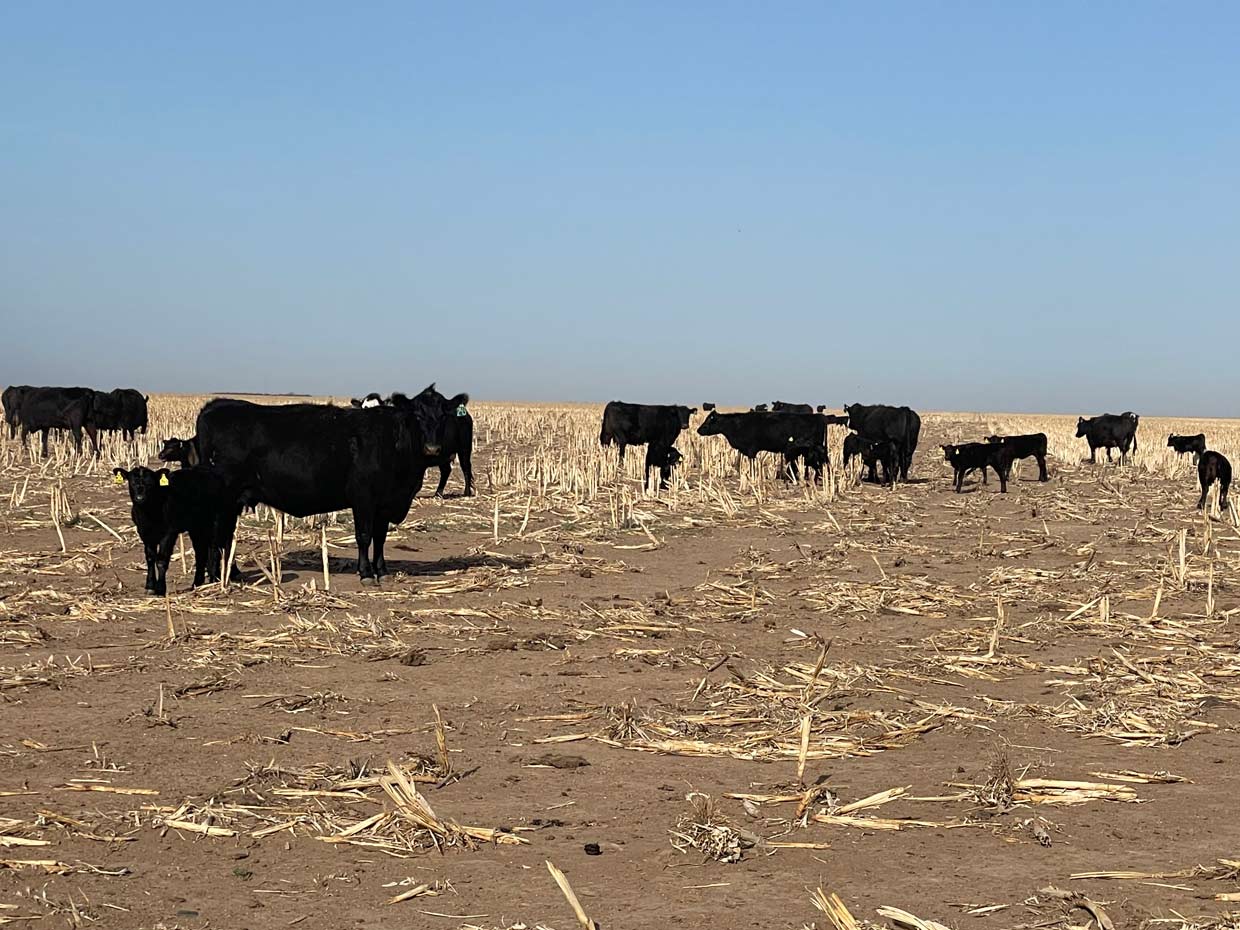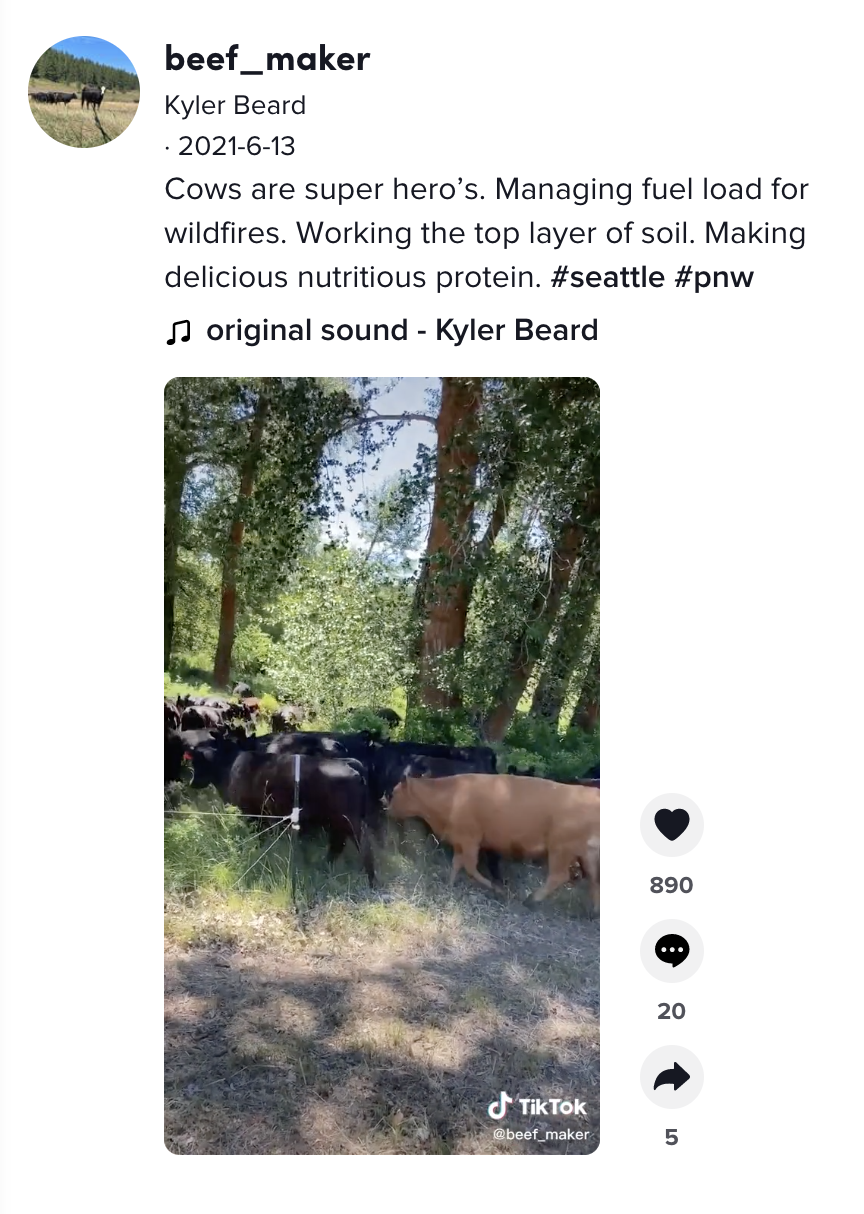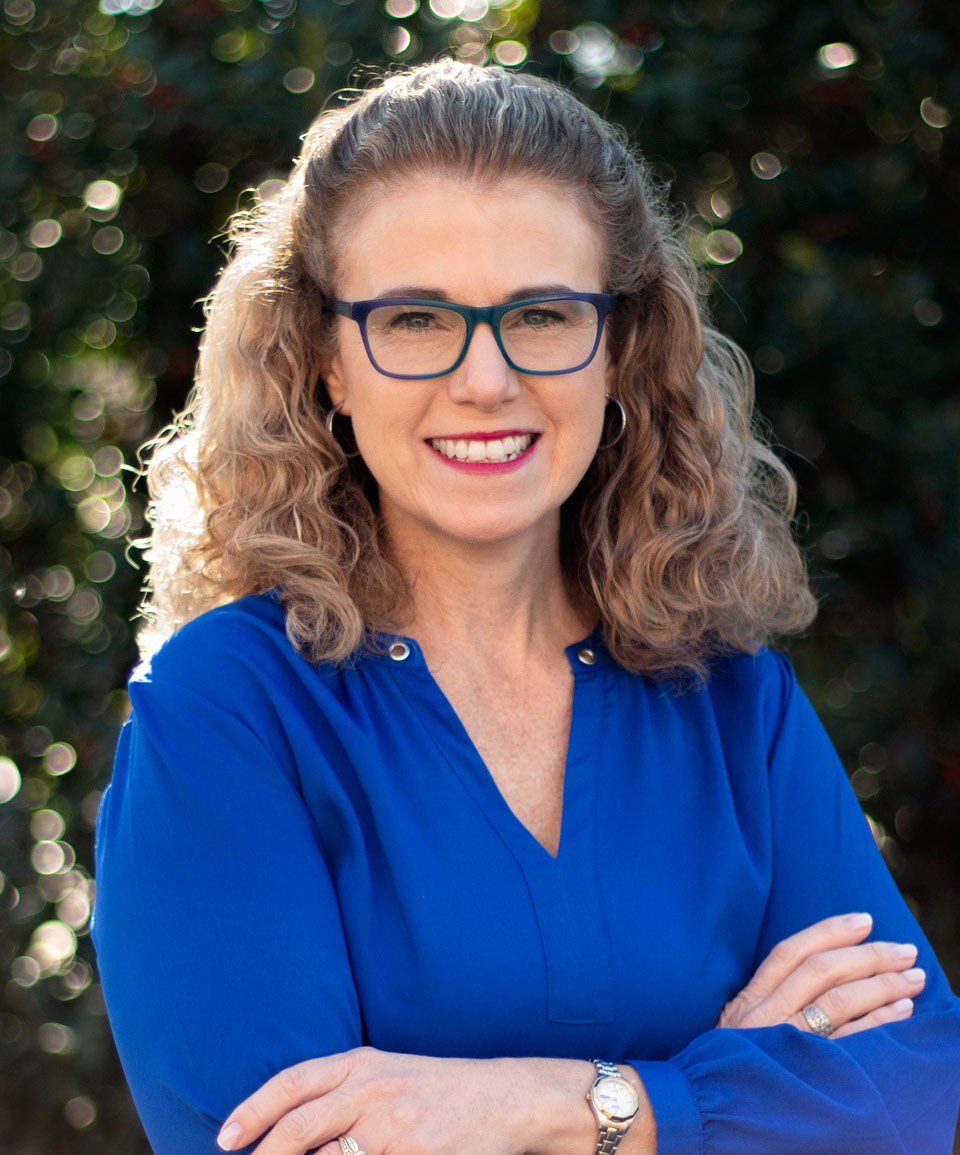The area of Kansas I call home is (at the time of this writing) in extreme drought – D3 – according to the Drought Monitor. In South Carolina everything was lush and green!
One of our stops was Yon Family Farms in Ridge Springs, South Carolina. It was spectacular! The Yon family focuses on the very beginning of the beef supply chain: They are in the seedstock business, raising purebred Angus cattle to grow up to be the mama cows and bulls at other farms and ranches. It was a gorgeous day, with beautiful mama cows and their calves grazing on beautiful grass. It was the idyllic picture of the beef industry — the very image consumers paint in their own minds and one we in marketing like to reinforce because it best aligns with how consumers see the industry. This image gives consumers the warm fuzzies when it comes to their number one concern associated with sustainability, according to Midan’s recent research: animal well-being. Of course, it’s easy for a pretty photo like the one above to convey that the cattle are well cared for.
Creating and maintaining this ideal picture is all about the grass. The Yon family does not shy away from the fact that they are more grass farmers than cattle producers. They know that in order to be good at raising cattle, you have to be excellent at raising grass.
And for the beef industry, this is the very heart of our sustainability story. Those frustrated by the beef industry are quick to point out that the cow/calf sector is responsible for 75% of greenhouse gas emissions, but that beautiful green grass is an input that helps create a much more valuable product that can then fertilize the very land the grass was eaten on to repeat the carbon cycle.

Sustainability can also look like this: Cattle in Washington state, doing a better job than a weed whacker, grazing under tall trees that shade them while they eat down the brush, gaining value nutrients with the added bonus of helping with fire management. (Side note: follow beef_maker on TikTok, he does a great job sharing his ranching story!)

Regardless of the location, consumers’ number one concern is the well-being of the animal (see my previous blog post on this topic). As we ramp up the sustainability conversations that are sure to follow USRSB’s newly set goals and metrics, we must begin with an assurance to consumers that the cattle – whether in a lush South Carolina pasture, a drought-affected sorghum field in Kansas or a shady forest in Washington state – are well cared for. Once they know that, the rest of the sustainability conversation will become easier.
